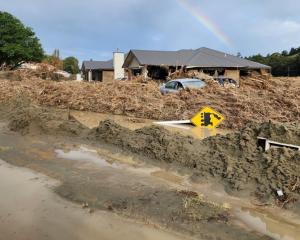
Last week, scientists from Niwa, Victoria University of Wellington and the Department of Conservation took thousands of aerial photographs of glaciers as part of their end-of-summer snowline monitoring programme to see how much they have retreated.
The long-term aerial survey provides a valuable evidence timeline stretching back to 1977.
Since the survey began, the global climate has warmed by about 1.1degC and it is estimated more than a third of the ice volume has been lost from the Southern Alps.

"A couple of glaciers, such as Brewster, have snowlines at least as high as in 2016, which was in our top five high snowline years.
"The surface of the Volta Glacier also showed a lot of snow and ice accumulation layers from prior years, meaning it’s probably a bad year when we can see all those ‘book pages’ from the past being exposed."
Victoria University researcher Dr Lauren Vargo said the majority of New Zealand’s glaciers had lost mass most years over the past decade, but this year it was particularly noticeable.
"But what was more striking to me is how much smaller and more skeletal so many of the glaciers are becoming," Dr Vargo said.
Niwa climate scientist Gregor Macara said based on what he saw during this year’s survey, it looked as if the glaciers had struggled compared with last year.
"It is disheartening to see the ongoing decline in extent of the glaciers we monitor."

"This will have far-reaching impacts, such as altering our beautiful landscape; affecting the livelihoods of people who rely on these natural wonders for tourism; and flow-on effects from decreased meltwater during periods of drought.
"It also emphasises the urgency of slowing climate change, because the impacts are going to become increasingly costly and hard to avoid."
Comments
If I were a few years younger I'd be out there doing a little gold prospecting in the newly exposed areas. There will be potential pay dirt becoming exposed that has not seen the light of day for maybe thousands of years.











